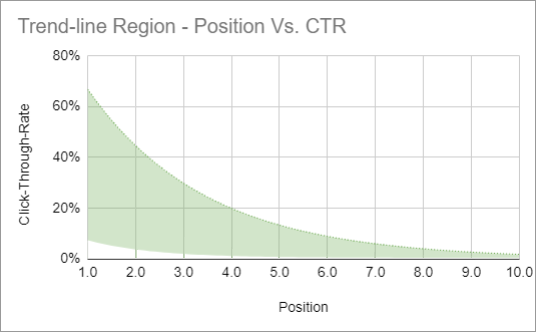Local SEO is key in aiding a successful online presence for restaurants. This comprehensive guide covers the top-level steps you can take to help improve your presence in local areas. I will be covering each of the following topics in more detail.
-
-
- Include your target location on key areas on your website
- Utilise your blog
- Schema markup for restaurants
- Insert Geotags on your images
- Focus on user experience
- Optimise your contact page
- Gain a presence on restaurant directories
- Utilise local websites for link building
- Make use of Google My Business features
- Use social media to your advantage
- Do not forget reviews!
Your Website
1. On-page SEO for restaurants
There are a few different ways to aid local SEO and play a part in pushing your restaurant to rank locally, specifically when it comes to on-page SEO. To begin with, it starts as simple as adding your target location to your homepage and relevant landing pages:
- Title tag – The title of the page that a user will see within Google search results, ideally between 50-60 characters long
– e.g Moroccan Restaurant Nottingham | Marrakesh - H1 – The heading of the page which should tell the user what the content is about
- Content – Text written on the page, it is recommended to include the target city/location within here with relevant keywords
- Alt Tags – This is the text that describes what an image represents, it should include the target location within the description here
- Meta Description – This is the snippet of text underneath the search result on Google, include the target /location with a relevant keyword at least once (between 150 and 160 characters long)

Read more: SEO on-page factors: creating great pages
2. Content
It is important that your website caters for a variety of search intents. This can be done in sections on the website such as FAQ’s or through content on your blog.
The blog is ideal for answering customer queries, targeting long-tail keywords and showing your business as a proactive thought leader and as a small bonus, Google loves blogs! It allows you to show off your business in a non-salesy manner.
But the content is not limited to just your website, there are a number of ways to use content that broaden your online presence, here are a few ideas:- Guest post on local blogs
- Get in touch with foodies/local influencers and do a form of collaboration
- Actively post in forums in the food industry
- Be active on social – do quizzes, competitions, be interactive
- Sponsor local events
Read more: Why content marketing is crucial to your digital strategy
3. Schema / Structured Data Markup
In 2017, Google released a specific schema markup for restaurants as well as a number of other sections/properties to go along with this.
The main goal of this is to focus Google’s attention towards the menus with as much information you can. This schema can go from as simple as directing to the correct URL, all the way to calories, fat count etc.
For information on how to correctly markup restaurant schema, have a look at this blog by Moz, which explains it perfectly https://moz.com/blog/schema-new-restaurant-menu-markup.
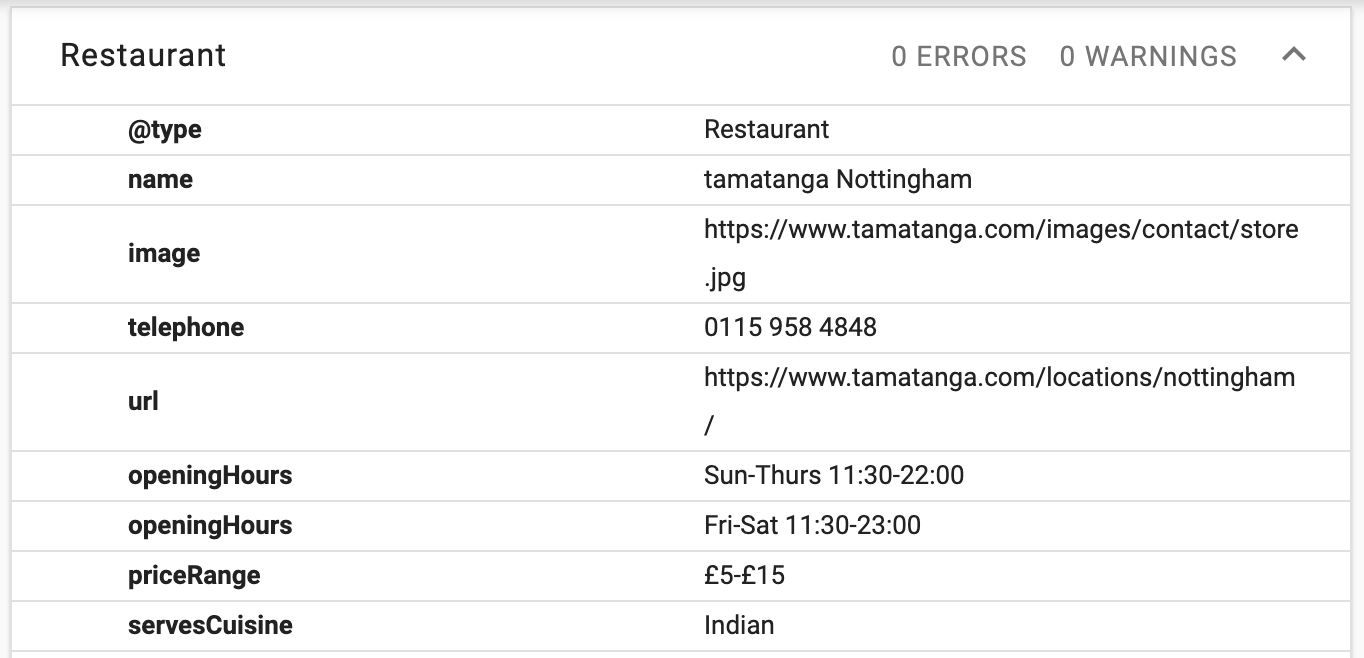
Read more: Using schema markup for local businesses4. Geotags on images
Another opportunity that not many companies tend to take advantage of is the geotag on images.
Photos taken with modern cameras tend to have a large file size with excessive metadata. Running the photo through websites such as ‘the eXifer’ allows you to alter this. You can add in unique titles, descriptions and even coordinates to your photos.
This may not have a large effect on rankings specifically, but another area to give a chance for a little trust signal boost is always great.
Another option in terms of geo-tagging is by uploading your photos to image platforms such as Flickr and filling in the information, including your location and keywords. Allowing stunning photos of your restaurant and dishes to have another chance at showing up in Google Image search results. -
Read more: Image Search: optimising your images to rank well in the search engines
5. Focus on user experience
There are so many different variations of techniques you can do to make your website as best as possible in Google’s eyes and for search results, but you can’t forget the main purpose of the website; the people.
You may be getting a load of traffic to your website, but unless they actually convert or do something with the information they receive, there is no use.
Have a think about what information the customer would need to know and put it in a place so that it is easy to find. It should not be a complicated dive into a website to find contact information, menus or reservation details. People have small attention spans when it comes to websites, if it is not in front of them, they will leave and go elsewhere.
6. Contact page
Although the contact page may not seem as important in regards to local rankings, there are a few little tips here to aid your local presence overall.
A large part of local SEO trust signals is consistency in the name, address and phone number; or NAP for short. Consistency in your NAP across your entire online presence is a very high trust signal and helps to avoid any confusion with incorrect information.
Another thing to bear in mind specifically for local is your surroundings. Is there something nearby that is recognisable, such as a train station or a monument? Perhaps a good idea would be to add a little section on your contact page with a ‘get directions from’ area. You could even go as far as adding a map if you believe this would be useful.
Finally, you need to think about why someone is going to your contact page. When creating or amending your contact page, could you provide any of this information? Some examples are:
- Opening hours
- Allergy details
- Dietary requirements
- View the location
- Book a table
Your online presence
7. Restaurant directories
Backlinks and citations are a key area of local SEO and can sometimes be very impactful in organic search. It provides Google with credible sources of information about your business with a consistent NAP (name, address, phone number), they can see your business exists, is legitimate and that what you say about your business is true and accurate.
Some examples of business directories could be:
- General business directories
- Industry / sector-specific directories
- Review sites such as Trustpilot
- Local news websites
- Local blogs such as LeftLion
- Social media
8. Local Link Building
A local citation refers to any mention of your company. Common local citations include listings on places like Yell and Thomson Local.
From an SEO point of view, local citations are another trust signal sent to Google to prove that your restaurant is genuine. Some examples of different forms of citations you can get include:
General business directories
- Industry, niche or sector-specific directories
- Local newspaper and press websites
- Local blogs – An example for Nottingham being LeftLion
- Social media websites like Twitter, FourSquare, Facebook and YouTube
From a customer perspective, the more places you see the restaurant and people interacting with them, the more trust you have and the more likely you are to visit.
Read more: SEO for Beginners: What makes a “bad link”
9. Google My Business
Critic reviews
Critic reviews being shown on your Google listing is not something that you can specifically control. Google said to me that “these reviews are automatically web crawled by the system to reflect the knowledge panel on Google search results depending upon the web presence”
The keyword here being ‘web presence’, here are a few ideas on how to increase your web presence:
- Fully optimise your Google listing
- Increase the number of reviews
- Add relevant photos
- Add promotional Google Posts
Another point is to consider, who does Google see as reputable critics? From personal research I have found that the most common critics I’ve seen are:
- Timeout
- Squaremeal
- The Infatuation
- Michelin guide
- The Nudge
To add to this, when looking for critics to potentially encourage people to your restaurant, take a look at their website to see if they include the correct markup to aid Google in seeing that it is a review.
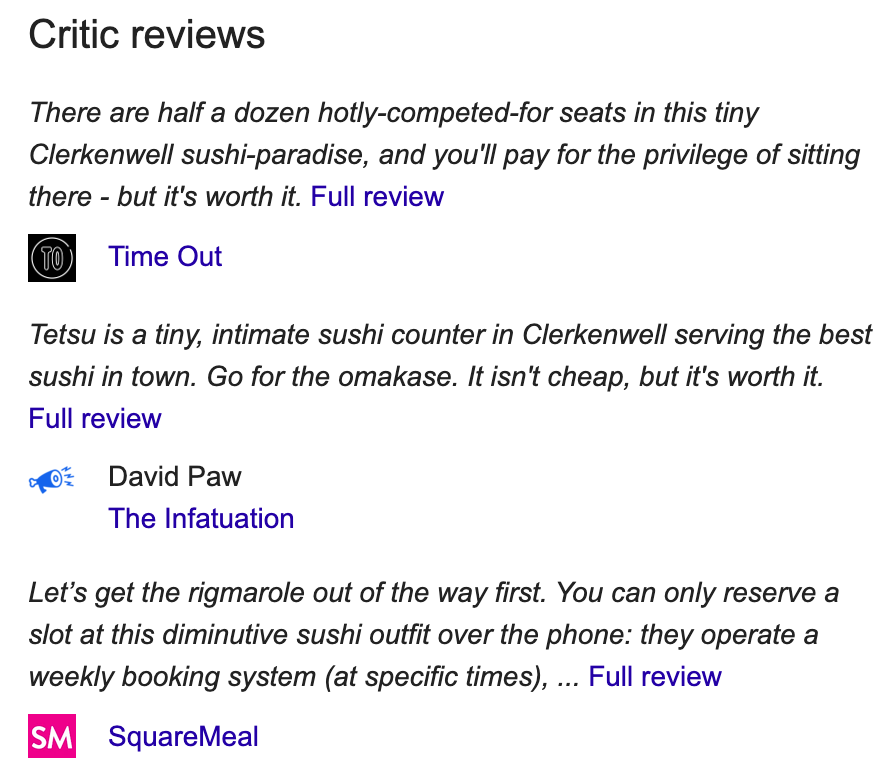
Menu
In terms of adding your menu to your Google My Business listing, there are two options.
The first option is to add the menu URL, this goes back to basics, with the simplicity of adding a link to your websites menu page which will then pull through as “Menu: (URL)” on the listing, as seen below. This option is very easy and can be very effective. It also has the least amount of upkeep, as it is a link to a webpage, as long as the webpage is up to date, there will be no upkeep for this particular task for Google My Business.
To add to this, if you would like to add the option to receive reservations, this is also done in a similar way.
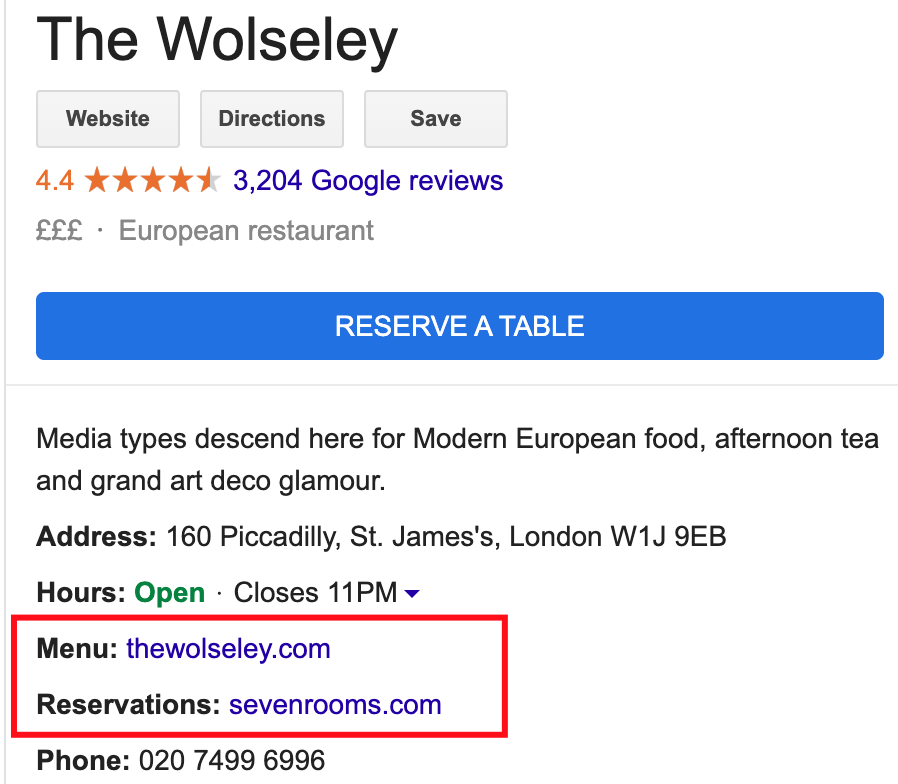
In addition to the above link, Google released a feature for restaurants allowing you to directly add your menu to your Google My Business listing. You will see an option for this within your Google dashboard. Within this section, you can segment your menu into different categories, add prices, give a description and also a wonderful image to entice your customers.
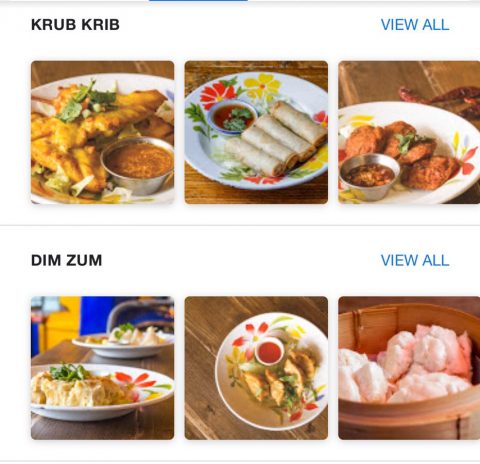
Images
When looking at your Google My Business listing, think of it as a presentation. Show your customers why they should come to your restaurant. Adding images can be such a good insight for a customer to see the standard that your business brings to the table. Do not stop at images of food either, add photos of your decor, feature your staff, add videos and do not forget smiling happy customers!
From the perspective of aiding your listing for Google, they have standard criteria within the dashboard for you to mark your photos against, including:
- Logo
- Cover photo
- Interior
- Exterior
- At work
- Team
- Video
Google posts
Google posts are quite an underrated feature when it comes to Google My Business, it seems to be quite hit and miss. For some companies, it works brilliantly and for others, not so much. From personal experience, it seems to work really well for restaurants.
Google posts is a form of microblogging. It allows you an extra bit of space to present your restaurant to potential customers. For this industry, in particular, it is a great asset to show off new dishes, show happy customers and to promote any upcoming events.
Also from a local SEO point of view, it is even more real estate in search results! To add to this, there have been some studies that suggest it may aid slightly in improving your ranking position in the local pack.
For more information on Google Posts and how to create them, take a look at this post: “Google Posts – what they are and how to use them”
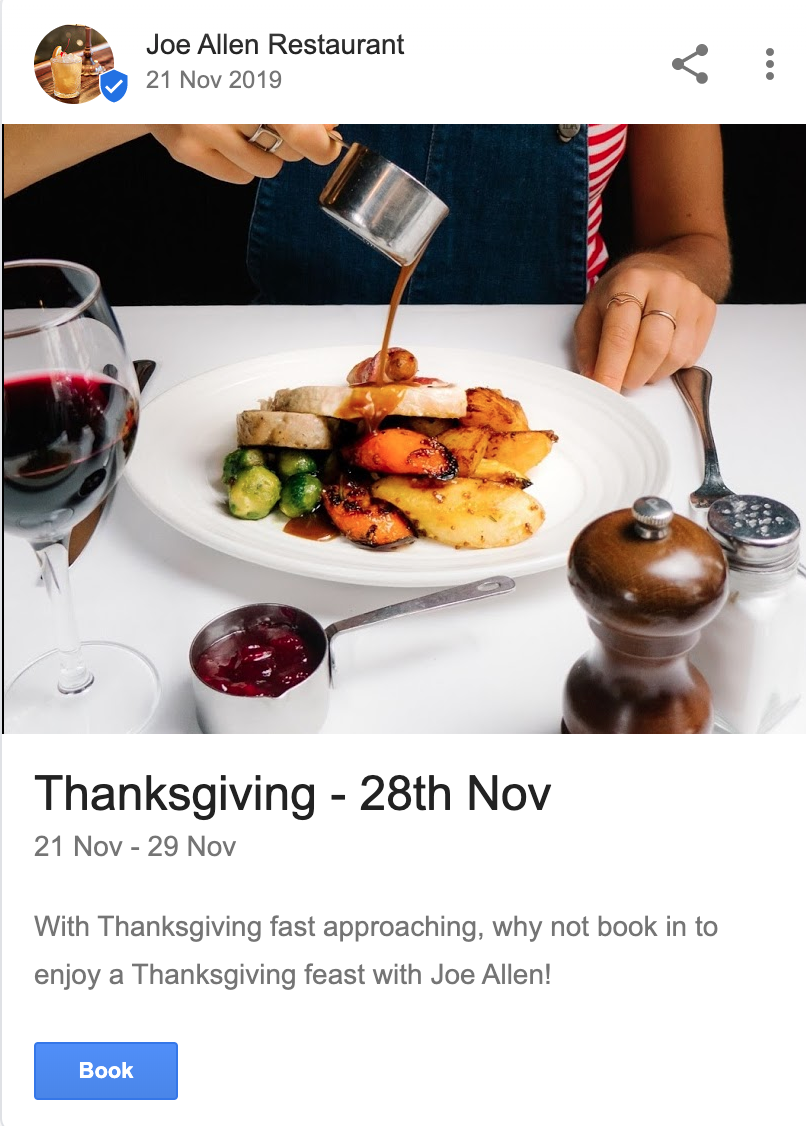
Read more: What Is Google My Business?
10. Social media
Social media can be a great asset to any business. Facebook, Twitter, Instagram and Foursquare are perfect for restaurants in particular. As mentioned previously, these profiles need to have a consistent NAP to ensure that Google sees the company as legitimate and trustworthy.
Your social media profiles are a useful way to get your customers talking about you, sharing your content and engaging with your business. Use this as best you can – don’t just post links, create interesting content and encourage your potential customers to share the word about your restaurant.
For some inspiration, take a look at Innocent Drinks and KFC’s Twitter accounts.
Read more: Social Media Tips for Busy People
11. Reviews
Reviews are key for both a potential customer and local SEO point of view.
In terms of local SEO, reviews give Google strong search ranking signals; it shows your company as genuine and can improve your restaurant’s visibility. It is not just the amount of reviews you receive that matters; the number of reviews with responses is a factor too according to a local study.
From a customer perspective, genuine reviews can be the make or break of someone choosing to come to your restaurant. According to Brightlocal, 86% of consumers read reviews for local businesses and 91% of 18-34-year-old consumers trust online reviews as much as personal recommendations.
With this in mind, try to make it as easy as possible for your customers to leave you a Google review. A few ways to do this include:
- Add a review link on your website
- Simply asking for customers to leave a review
- Hand out review/business cards
- Create a Google My Business shortname and place this wherever you can (email footers, newsletters, leaflets) an example of a shortname being http://g.page/hallamagency/review

Read more: How to get more Google reviews
Improving your local presence is not something that can be completed overnight and unfortunately for some restaurants, it is not always completely straightforward. This guide covers the top-level essentials to kick start your journey to dominating local search results. I hope you found this useful, and if you need any help, please get in touch with us.
Want more tips?
Have you just learned something new?
Then join the 80,000 people who read our expert articles every month.
